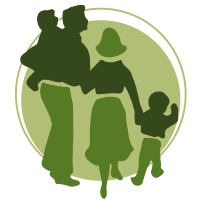Some years ago I came across an article which talked about areas around the world where people lived longer and were generally healthier. I remember being struck by the fact that their longevity was not dependent on their financial situation; their education or what kind of job they had. It was, however, linked to how much they naturally moved during the day and what they ate. I remember finding it challenging to find out more information about this until this year when I finally found a series of books on the subject.
One of them is called Ikigai by Hector Garcia and Frances Miralles. The book talks mainly about the people of Okinawa in Japan, but also of the other Blue Zones around the world where many individuals live long and healthy lives.
Ikigai means purpose, or what the French call ‘raison d’etre’. And the book is inspired by the centenarians who live on the Island of Okinawa in Japan – the highest number in the world. According to Okinawans, having an Ikigai is the reason why we get up in the morning. They believe that Ikagai brings satisfaction, happiness and meaning to our lives. One of the commonalities of the Okinawans is that they never really retire. They keep doing what they love for as long as their health allows it. This is a very stark difference from most professional people in the west.
But what is a Blue Zone?
But let me start with how the Blue Zone concept came about. Scientist Michelle Poulain studied a group of centenarians in Sardinia who seemed to live really active lives and also enjoy good health. He then drew a blue line on a map where these people lived. Some years later other scientists started to find other groups around the world where people were living between 90—100 in good health and still leading active lifestyles – hence the name Blue Zone. Blue Zones boast many individuals who live past the age of 100. They are often in good health, with lower rates of chronic diseases such as dementia, heart attack and strokes.
Where are some of the Blue Zones in the world?
- Okinawa, Japan.
- The island of Ikaria, Greece
- The seventh day Adventists in Loma Linda in California
- Nicoya, Costa Rica
- Sardinia, Italy
What are the commonalities of the people of the Blue Zones?
The centenarians enjoy good levels of vitality and health.
The blood test of the Okinawan population reveals fewer free radicals – attributed to f drinking green tea and the habit of only eating until their stomachs are 80% full. Women experience more moderate symptoms during menopause, and both men and women maintain higher levels of sexual hormones until later in life. The rate of dementia is well below global levels.
They recommend that we learn to relax more. They believe it is important to find a state of ‘flow’ which they find in their daily tending of gardens. They believe in doing something that you love losing yourself in that activity and then time disappears.
They show gratitude each day and say their prayers. The Blue Zone population have a thirst for life and don’t consider themselves old. They really love laughing and do it often. They keep learning and are curious about life.
They belong to clubs and communities that support each other like families. They feel deeply connected to others in their communities. They don’t appear to worry as we do in the west, and their life is less hurried and stressed. Those who don’t work anymore, still volunteer to give back to their community.
What do they eat in the blue zones?
The scientists who studied the Blue Zones found that there were some differences in all the groups but still many similarities. Some ate meat, others were vegetarians, some drank red wine and others drank lots of green tea. But the broad principles were the same:
- None of the groups ate processed food. They ate seasonal, fresh, unprocessed and local produce.
- They sat down and ate their meals together.
- They had treats but only on special festivals or occasions like Christmas or Easter – not every day after school or work.
- They ate a wide variety of foods especially vegetables. In Okinawa they eat 206 different foods including spices.
- They ate at least 5 helpings of fruit and vegetables a day and they believe in eating a “rainbow” of colours.
- They rarely ate sugar.
- They ate oily fish full of omega 3 three times a week.
- They drank Sanpin-cha, a mix of green tea and jamine flowers three times a day.
Movement
Some studies from the Blue Zones show suggest that people who live longest are not necessarily those who exercise the most but rather those who move the most. The residents in Okinawa who are over 80-100 walk a lot and work in their garden every day. They almost never stop moving. They exercise every day and they certainly don’t think that getting old is a reason to stop moving.
To find out more about the Blue zones see our Luck’s Yard blog links below:
The super ager syndrome and diet:
https://www.lucksyardclinic.com/active-ageing/
https://www.lucksyardclinic.com/how-to-be-a-super-ager/
Active aging and the Heroes of Luck’s Yard: Interviews with our patients over the age of 60 who inspire us with their philosophy on life!
https://www.lucksyardclinic.com/rita-a-super-super-ager/
https://www.lucksyardclinic.com/lucks-yard-heroes-2/
https://www.lucksyardclinic.com/lucks-yard-heroes/
Podcasts on the subject:
If you would like to learn more about Blue Zones you can find out more information here:
- Chris Evans from BBC2 interviewing the authors of the book Ikigai.
- Dr. Chatterjee: Feel better, live more.
- People Fixing people: A podcast where they have dedicated a whole programme to how a town in Florida took on the Blue Zone way of living and how the residents responded.



